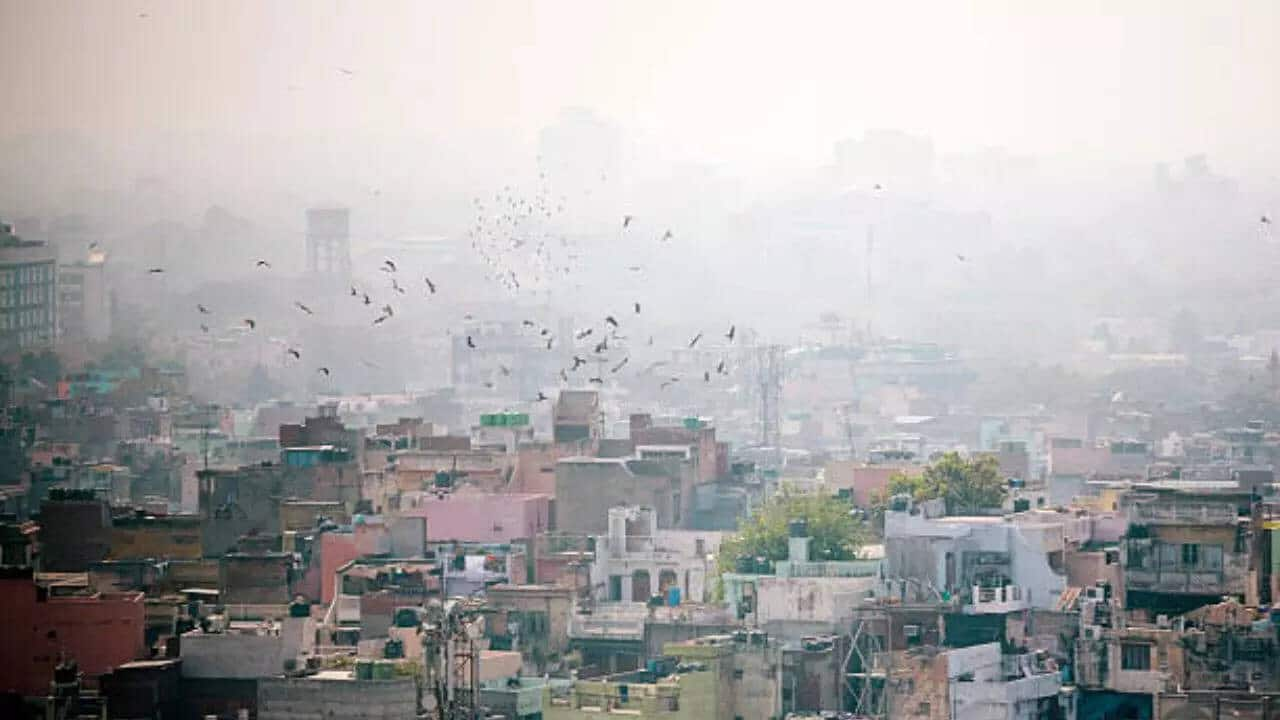Our Terms & Conditions | Our Privacy Policy
Delhi’s air quality plummets, Anand Vihar records season’s worst AQI
Was a long read? Making it simpler…
Next Article
Delhi’s overall AQI remained at 317 on Monday
What’s the story
Delhi is currently reeling under alarming levels of air pollution, with several areas recording hazardous Air Quality Index (AQI) readings.
On Monday, Anand Vihar recorded an AQI of 627—the worst this season—according to data from the Aqicn website.
The overall AQI for the national capital remained at 317 as of 8:00am on Monday.
PM2.5 concentration in Delhi exceeds WHO’s danger limit
The PM2.5 concentration in Delhi is 59 times higher than the World Health Organization’s prescribed danger limit, the IQair website noted.
The AQI scale defines ‘poor’ air quality between 200 and 300, ‘very poor’ between 301 and 400, ‘severe’ between 401 and 450, and above 450 as “severe-plus.”
Delhi areas with hazardous AQI include Alipur (388), Punjabi Bagh (319), Narela (372), Bawana (368), and ITI Shahdra (408).
Delhi deploys anti-smog guns, targets dust pollution
Amid the worsening pollution crisis, Delhi Environment Minister Gopal Rai announced the deployment of around 200 mobile anti-smog guns across the city to tackle dust pollution.
The guns will be deployed in three shifts of eight hours each, spraying water in every assembly constituency.
Rai said teams are targeting dust pollution, vehicle emissions, and biomass burning as part of their comprehensive strategy to improve air quality.
Stubble burning contributions to Delhi’s pollution decrease
Despite stubble burning contributing less to pollution (over 35% on Friday, only 15% on Saturday), other factors continue to severely affect Delhi’s air.
The city’s air quality deteriorated post-Diwali despite a complete ban on firecrackers being widely flouted.
Anand Vihar recorded an AQI of 424 on Sunday night, putting it in the “severe” category.
Delhi’s average AQI worsens, smog reduces sunlight penetration
The city’s average AQI deteriorated from 316 on Saturday to 382 on Sunday.
The thick smog has also reduced the penetration of sunlight and contributed to Delhi recording its lowest nighttime temperature this season.
Sunday’s minimum and maximum temperatures were recorded at 16.5 degrees Celsius and 33.2 degrees Celsius respectively, highlighting the severe impact of air pollution on weather.
Delhi to deploy 10,000 civil defense volunteers for pollution control
Delhi Chief Minister Atishi announced that 10,000 civil defense volunteers will be deployed in the next few days to help combat air pollution.
These volunteers were removed from their duties as bus marshals last year following objections from revenue and finance departments.
This comes as part of the government’s proactive measures to tackle the deteriorating air quality situation in the national capital.
Images are for reference only.Images and contents gathered automatic from google or 3rd party sources.All rights on the images and contents are with their legal original owners.




Comments are closed.